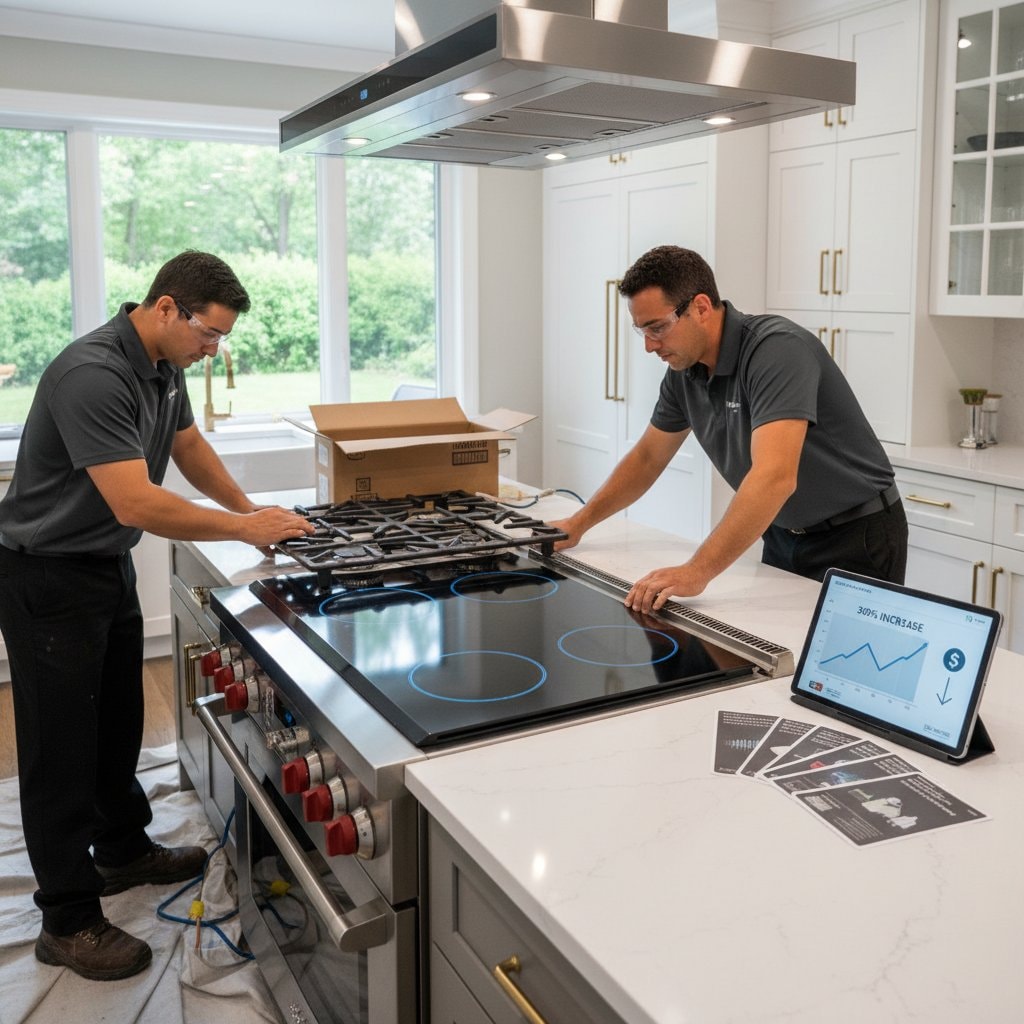Induction Cooktops: Why Conversions Soared 300% This Year
Homeowners across the nation observe friends replacing traditional gas stoves with smooth glass surfaces that heat pots directly and clean effortlessly. This trend prompts questions about the technology and its value for personal use. Conversion projects to induction cooking have risen by an estimated 300 percent, marking a significant shift in kitchen appliances.
The increase stems from more than aesthetics or passing fads. Factors such as enhanced safety, superior efficiency, and environmental considerations, paired with tangible financial incentives, render the upgrade accessible. The following sections examine these drivers and provide guidance for evaluating suitability in individual kitchens.
Factors Driving the 300% Surge in Conversions
Such a dramatic rise requires converging influences that render induction practical and desirable.
Incentives and Rebates
Utilities and regional initiatives frequently provide rebates for transitioning from gas to efficient electric appliances like induction models. These programs offset several hundred dollars from installation expenses. Certain municipalities offer extra credits for decommissioning gas lines completely.
This assistance addresses the primary obstacle of initial costs. Through strategic purchases and rebate applications, the expense of an induction setup often aligns closely with that of a premium gas range.
Declining Equipment Prices
Induction technology once commanded luxury prices in residential settings. Current market options have transformed this landscape. A reliable four-burner induction cooktop now ranges from $900 to $1,200. Complete freestanding induction ranges begin at approximately $1,400 to $2,500, varying by manufacturer and capabilities.
These figures compare favorably to mid-tier gas ranges, particularly when accounting for long-term energy reductions and simplified ventilation requirements.
Heightened Focus on Indoor Air Quality
Awareness grows among homeowners that gas stoves emit pollutants linked to asthma and respiratory conditions, as evidenced by various studies. This realization prompts reevaluation of kitchen appliances.
Induction cooking avoids open flames and combustion, resulting in purer indoor air and diminished reliance on extensive exhaust systems. Families with children or individuals prone to allergies find this health advantage particularly compelling.
Alignment with Energy Efficiency and Climate Objectives
Electric appliances support overarching sustainability efforts. As residences incorporate solar installations and access to renewable power sources, induction emerges as an environmentally sound choice. Those committed to lowering carbon footprints view the switch as a substantive contribution to household efficiency.
Detailed Cost Analysis and Budget Tiers
Consider a standard induction conversion across three expenditure categories:
Entry-Level Option (Approximately $1,200 to $1,800)
- Standard 30-inch induction cooktop
- Basic electrical adjustments
- Reuse of current cabinetry and countertop openings
- Self-managed installation for capable homeowners, with professional electrician for circuit work
Standard Option (Approximately $2,000 to $3,500)
- Advanced cooktop or range featuring intuitive controls
- Expert installation including electrical enhancements
- Adjustments to cabinetry as needed
- Replacement of select cookware items
High-End Option (Approximately $4,000 to $7,000 or More)
- Seamless induction range integrated with convection oven
- Tailored countertop integration or island reconfiguration
- Comprehensive new cookware collection and upgraded ventilation
- Coordinated efforts from licensed electricians and carpenters
Rebates substantially lower these estimates. Consult local utility resources prior to acquisition, as programs specify eligible models.
Insights from Recent Adopters
New users frequently express astonishment at the speed and cleanliness of induction cooking. They liken it to gas performance minus the residue and odors. The absence of surface heat keeps surrounding areas cooler during use.
Initial adaptation may involve familiarizing oneself with cookware behavior due to rapid temperature shifts. Most users report enhanced precision after this phase.
Occasional discussions address operational sounds. High settings might generate a subtle hum or click, which typically diminishes with reduced power or thicker cookware.
Sustained Benefits and Care Practices
Induction surfaces feature durable construction with limited components prone to wear. Proper care involves lifting cookware to avoid surface abrasion and using approved cleaners for stain removal.
Daily cooking households achieve 30 to 50 percent less energy consumption versus gas equivalents. When combined with initial rebates and air quality gains, the investment yields enduring comfort and savings.
Steps to Implement Your Conversion
Begin by inspecting your kitchen's electrical capacity and dimensions of the current appliance area. Engage a certified electrician to review wiring feasibility and estimate expenses. Research induction units suited to your culinary preferences and financial parameters for an informed decision.










